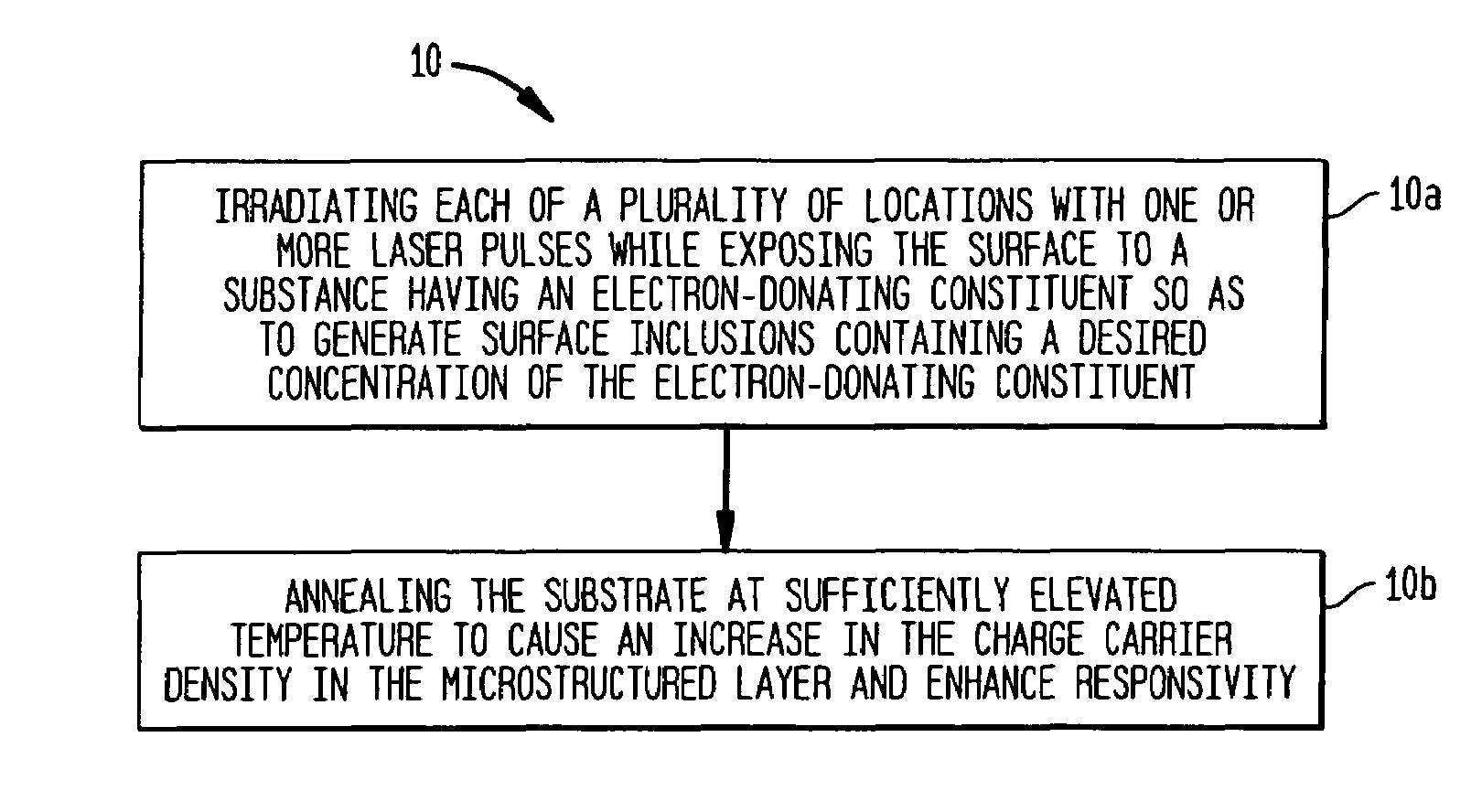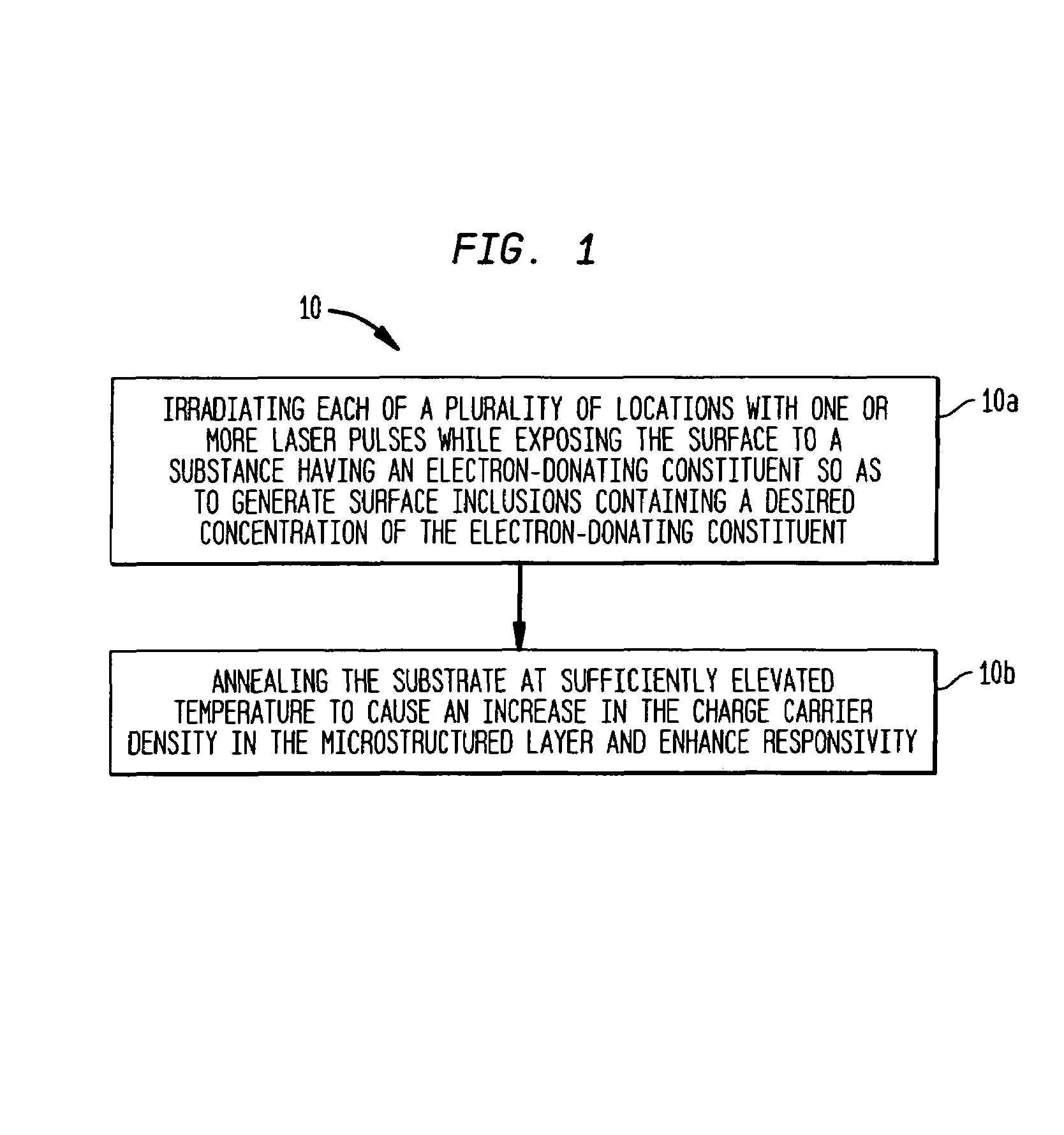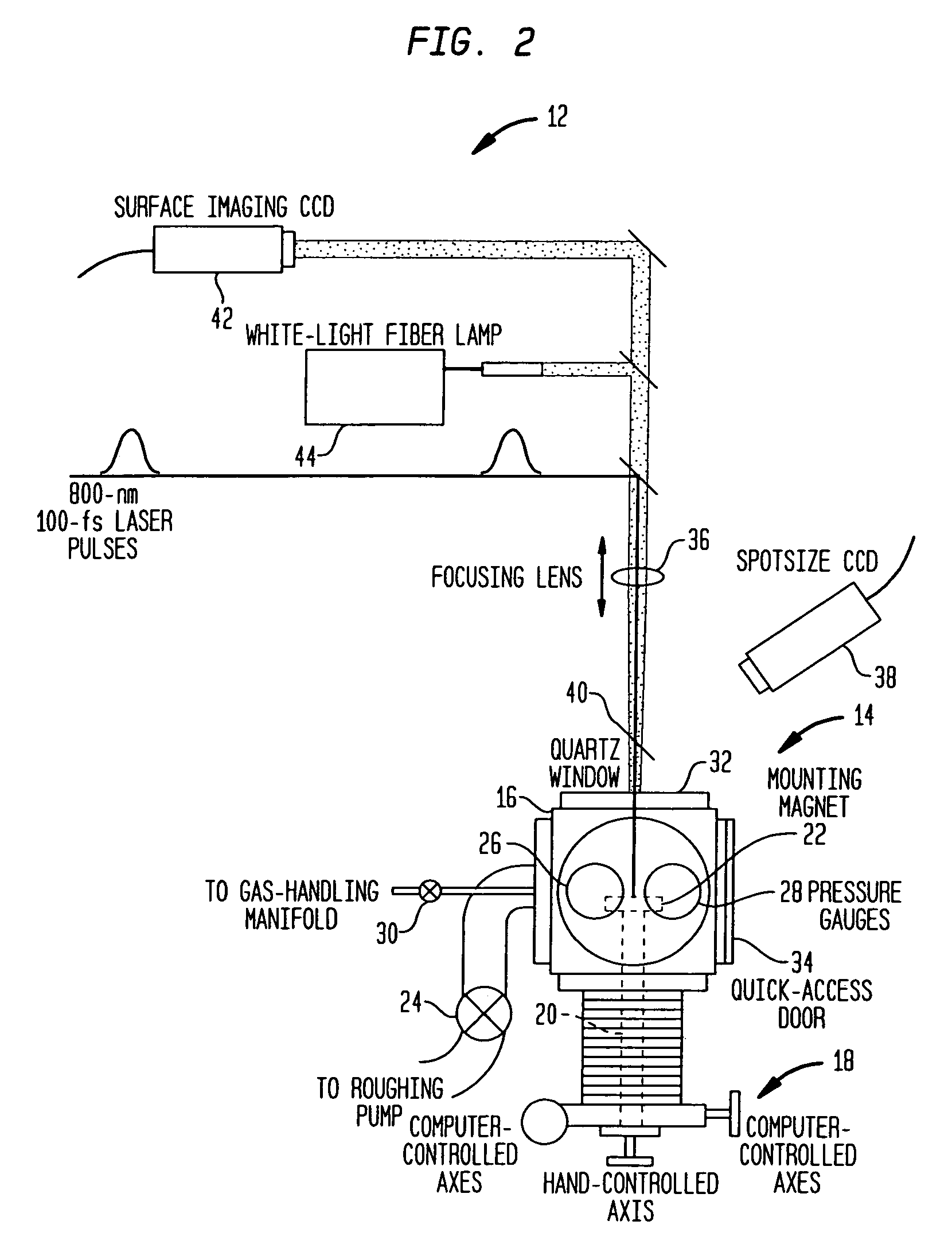Manufacture of silicon-based devices having disordered sulfur-doped surface layers
a technology of sulfur-doped surface layers and silicon-based devices, which is applied in the manufacture of final products, basic electric elements, climate sustainability, etc., can solve the problems of not being able to be readily integrated in optoelectronic circuits primarily silicon-based, generally more expensive, and not particularly suitable for detecting radiation having long wavelengths. , to achieve the effect of enhancing the charge carrier density
- Summary
- Abstract
- Description
- Claims
- Application Information
AI Technical Summary
Benefits of technology
Problems solved by technology
Method used
Image
Examples
Embodiment Construction
[0045]With reference to a flow chart 10 of FIG. 1, in one aspect, the present invention provides a method of fabricating a radiation-absorbing semiconductor structure in which, in an initial step 10a, each of a plurality of locations on a surface of a silicon substrate is irradiated with one or more laser pulses while exposing the surface to a substance having an electron-donating constituent so as to generate surface inclusions containing a concentration of the electron-donating constituent. The laser pulses can have a central wavelength in a range of about 200 nm to about 1200 nm, and a pulse width in a range of about tens of femtoseconds to about hundreds of nanometers. Preferably, the laser pulse widths are in a range of about 50 femtoseconds to about 50 picoseconds. More preferably, the laser pulse widths are in the range of about 50 to 500 femtoseconds. The number of laser pulses irradiating the silicon surface can be in a range of about 2 to about 2000, and more preferably, i...
PUM
| Property | Measurement | Unit |
|---|---|---|
| temperature | aaaaa | aaaaa |
| central wavelength | aaaaa | aaaaa |
| time | aaaaa | aaaaa |
Abstract
Description
Claims
Application Information
 Login to View More
Login to View More - R&D
- Intellectual Property
- Life Sciences
- Materials
- Tech Scout
- Unparalleled Data Quality
- Higher Quality Content
- 60% Fewer Hallucinations
Browse by: Latest US Patents, China's latest patents, Technical Efficacy Thesaurus, Application Domain, Technology Topic, Popular Technical Reports.
© 2025 PatSnap. All rights reserved.Legal|Privacy policy|Modern Slavery Act Transparency Statement|Sitemap|About US| Contact US: help@patsnap.com



